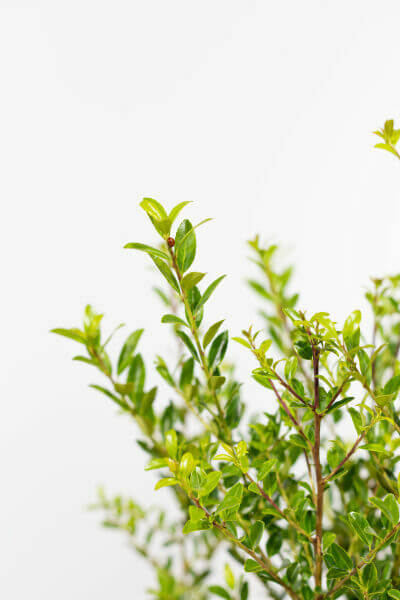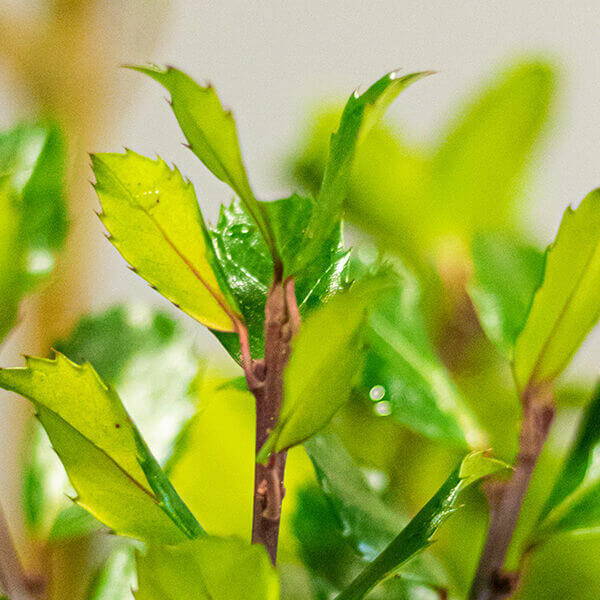Hedge Plants For Creating Spaces
Hedge Plants For Creating Spaces
Blog Article
Hedge Plants For Texture
Enhance your garden's allure with lush hedge ranges such as Yew (Taxus), Thuja, Laurel, Photinia, and Bamboo, commemorated for their structural stability and ecological benefits.
Yew and Thuja provide evergreen protection and winter season resilience, while Laurel provides rapid development and broad, fragrant leaves.
Photinia includes seasonal beauty with its dynamic red foliage, and Bamboo lends a low-maintenance, tranquil ambiance.
These hedges improve air quality, reduce sound, and create tranquil, private spaces.
Proper planting, spacing, and maintenance guarantee energetic development and eco-friendly harmony.
Check out how these lush ranges can elevate your garden's appeal and wellness.
Key Takeaways
Change Your Garden With Lush Hedge Ranges
- Select Yew for its dense, evergreen growth and unrivaled durability.
- Opt for Laurel for its fast growth and broad leaves, making sure quick privacy.
- Choose Photinia for its dynamic seasonal foliage, which turns a striking dark red.
- Use Bamboo for a low-maintenance, winter-hardy hedge with visual appeal.
- Area plants 2-3 per meter and prune frequently for ideal development and health.
Popular Hedge Plants
When changing a garden with lavish hedge ranges, it's necessary to consider popular hedge plants such as Yew, Thuja, Laurel, and Photinia due to their special qualities and benefits.
Yew (Taxus) is extremely esteemed for its longevity and dense, green development, making it a prime option for enduring landscapes.
Thuja is kept in mind for its evergreen foliage and robust winter durability.
Photinia includes seasonal vibrancy with red leaves that darken gradually, creating vibrant visual appeal.
Laurel provides fast growth and aromatic, broad leaves, suitable for quick privacy.
Furthermore, Bamboo is an exceptional choice for atmosphere, offering a low-maintenance, winter-hardy option that improves the garden's visual with its stylish, swaying canes.
These selections deal with a variety of horticultural needs and preferences.
Advantages of Garden Hedges
Garden hedges use a wide variety of advantages, making them an important addition to any landscape. These natural barriers are cost-effective to implement and provide significant wind security, enhancing air flow and contributing to sound decrease. The dense foliage of hedges like Thuja and Beech ensures privacy by blocking visibility, producing a remote and tranquil environment.
Hedges likewise play an important function in microclimate regulation, providing a stable environment that promotes plant development and decreases temperature level fluctuations. Their intricate leaf structures filter pollutants, enhancing air quality and adding to a much healthier garden environment.
Moreover, hedges excel in noise reduction, taking in and deflecting acoustic waves to lower ambient sound levels. This dual functionality of offering both visual and acoustic privacy enhances the overall harmony and visual appeal of any garden.
Planting and Upkeep Tips
For an effective hedge, meticulous preparation of the planting location is important. Make sure the soil has appropriate pH and drainage to support strong root development.
Area the plants properly for the picked types. Water the hedge often during its initial development phase, adjusting as required with seasonal changes.
Implement a systematic bug control and disease prevention method, using chemical or natural treatments when required. Regularly check for aphids, mites, and fungal infections.
Apply mulch to retain wetness and suppress weeds. Seasonal pruning promotes dense growth and air blood circulation, important for plant health.
Following these guidelines will assist you cultivate a vibrant, properly maintained hedge that improves the beauty of your garden.
Spacing and Cutting Guidelines
Spacing and Cutting Guidelines
Appropriate spacing and trimming are important for cultivating healthy, visually appealing hedges. Sufficient spacing ensures each plant receives enough nutrients, light, and airflow.
Follow these standards for optimal hedge upkeep:
- Spacing: Position hedge plants 2-3 plants per meter to motivate robust growth.
- Pruning Strategies: Regular pruning is vital for maintaining preferred hedge height and shape. Cut new growth in summertime and cut back older wood throughout winter.
- Seasonal Care: Change cutting approaches and schedules according to seasonal requirements to ensure plant health.
- Hedge Height: Routinely monitor and trim to keep the desired hedge height and accomplish consistent aesthetics.
Adhering to these steps will guarantee your hedge prospers, boosting both the appeal and performance of your garden.
Choosing the Right Hedge
Choosing the Right Hedge
Picking the proper hedge includes assessing aspects such as mature height, foliage density, and environmental strength. Effective hedge plant selection needs comprehending each species' growth attributes and site-specific versatility.
For example, Yew (Taxus) uses outstanding longevity and thick growth, while Thuja is noteworthy for its winter durability. Additionally, thinking about maintenance requirements is important; fast-growing species like Laurel or Privet need regular cutting, whereas low-maintenance options like Bamboo or Ivy might be more effective for those looking for minimal maintenance.
Environmental elements such as soil type, light availability, and wetness conditions need to also assist the selection procedure. This careful method makes sure the chosen hedges will grow, supplying both functional and aesthetic advantages to the garden landscape.
Shipment and Planting Recommendations
To guarantee your hedge plants thrive, they must be provided by specialized couriers and planted immediately upon arrival.
Follow these essential steps for successful planting:
- Soil Preparation: Improve the soil with natural matter to improve drainage and nutrient material.
- Planting Depth: Develop a trench twice the width and equal to the depth of the root ball.
- Watering Techniques: Water thoroughly after planting, keeping the soil regularly wet but not saturated.
- Mulching: Apply a layer of mulch to maintain wetness and suppress weeds.
Client Assistance and Service
Offered the vital role of timely support in horticultural pursuits, our client assistance group is readily available six days a week through telephone, email, and social media to offer expert recommendations and quickly attend to any issues. Their devotion to fast reaction times guarantees client fulfillment by solving questions associated with plant health, optimal planting approaches, and maintenance schedules.

Schedule
-----------------
Within 48 hours
Social Media
This thorough support system, reinforced by an outstanding 9.3/ 10 client score, highlights our dedication to boosting the gardening experience for every single customer.
Regularly Asked Concerns
How Long Does It Take for Hedge Plants to Develop?
Hedge plants generally require one to 3 years to end up being totally developed, with the exact duration differing by types and growing conditions.
Reliable care throughout this important duration is vital for robust development. Consistent watering, watchful weed control, and appropriate fertilizer application are pivotal in promoting strong root development.
For instance, fast-growing types like Laurel might establish more quickly, while slower-growing varieties such as Yew might take longer. Persistent upkeep accelerates the establishment procedure, resulting in dense and healthy hedges.
What Are the very best Hedge Plants for Privacy?
The concern of the very best hedge plants for privacy includes evaluating evergreen and deciduous alternatives.
Evergreen hedges like Thuja, Laurel, and Cypress offer year-round protection, guaranteeing constant personal privacy.
On the other hand, deciduous hedges such as Beech offer seasonal personal privacy, shedding leaves in colder months.
Key maintenance ideas for personal privacy hedges consist of routine cutting, fertilizing in spring, and correct spacing-- typically 2 to 3 plants per meter.
Furthermore, constant watering and thorough weed elimination are crucial for promoting healthy, dense growth.
Can Hedge Plants Attract Wildlife to My Garden?
Yes, hedge plants can attract wildlife to your garden by supplying essential advantages like shelter, food, and nesting websites, therefore boosting regional biodiversity. Yew, holly, and laurel are exceptional for attracting birds, while ivy supports a range of pests.
Nevertheless, it is very important to note that there are some disadvantages, such as increased maintenance to handle insects and regular upkeep. Thoroughly choosing and maintaining hedge varieties can assist balance these benefits and downsides, eventually promoting a dynamic and sustainable environment in your garden.
Are There Any Blooming Hedge Plants Available?
Yes, there are flowering hedge plants offered that can enhance the charm of your garden.
For example, Elaeagnus, likewise called Olive Willow, produces aromatic white flowers in the fall, adding a touch of elegance.
Photinia, another popular choice, showcases lively red leaves that mature into an abundant green, producing a vibrant visual impact throughout the seasons.
To make sure these plants flourish, it's important to practice correct pruning techniques and seasonal upkeep, such as cutting new development in the summer and cutting down in the winter.
These steps will assist preserve the health and visual appeal of your blooming hedges.
How Do I Prevent Insects in My Hedge Plants?
To avoid pests in hedge plants, utilize natural insect control approaches and maintain appropriate hedge care. Present advantageous bugs like ladybugs, which take advantage of damaging pests, to produce a well balanced environment.
Regularly inspect your hedges for signs of infestation and immediately get rid of any afflicted parts to avoid the spread. Ensure the health of your hedges by applying balanced fertilizers and offering sufficient water.
Use mulching to keep soil wetness and correct spacing to lower plant tension and promote robust development. These practices jointly assist in decreasing bug concerns and keeping a healthy hedge.
Conclusion
In essence, picking the ideal hedge ranges such as Yew, Thuja, and Laurel can change any garden into a relaxing haven. These plants offer year-round greenery, enhance aesthetic appeal, and offer useful advantages hedge plants like noise reduction and wind protection.
Correct planting strategies, precise spacing, consistent watering, and seasonal trimming are vital for optimum development.
Trustworthy delivery services and expert customer assistance make sure a seamless experience from purchase to planting, making it simpler than ever to raise your outside space.
Garden hedges offer a plethora of benefits, making them an important addition to any landscape. These natural barriers are affordable to implement and offer substantial wind security, improving air flow and contributing to noise decrease. The dense foliage of hedges like Thuja and Beech guarantees personal privacy by blocking exposure, developing a remote and peaceful environment.

Pruning Techniques: Routine pruning is important for preserving desired hedge height and shape. Cut brand-new development in summer and cut back older wood during winter season.
Report this page